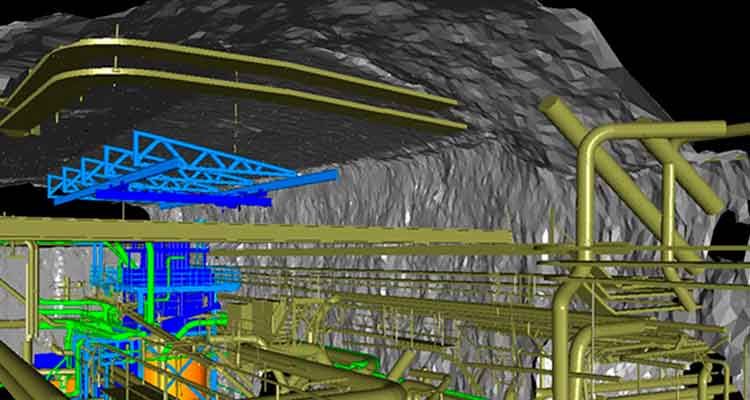To date, the site has maintained a high level of sustainability and environmental responsibility, including with its waste management. Now, the company has planned to build a new reprocessing plant, known as the B2 project. The process of managing a significant number of queues requires complex setup. It includes many different processing spaces, mechanical and electrical systems, and an extensive pipeline network, requiring the participation of a wide variety of disciplines and specialized engineers.
The visualization of a construction of a complex nature
The company believed that the development of this complex project and its many subsystems would be better understood if construction progress could be fully visualized at each stage , with an easy exchange of information between owner Minsur and its main contractor .
Fieldwork preparation
The first step that was taken was to convert all the original 3D modeling of the plant into complete IFC (Industry Foundation Class) files, considered as the basic interoperability standard for BIM data. The second essential step was to convert the original baseline schedules from the Primavera P6 .XER format into Powerproject files.
Reducing reporting demands
To enable the weekly report, APP Consulting recommended the use of an Elecosoft Powerproject add-on that could automate the updates of the .XER file directly in the Powerproject files.
This meant that each week the 4D program could be quickly updated to produce 4D BIM reports in various formats.
Establishment of a new reporting standard
These capabilities, along with 4D scheduling data, enabled the project team to show progress not only weekly to the management team but also monthly to senior executives. The rich 3D visualization, animations, and progress details that these reports now contain have changed expectations and set a new standard for the quality of the reports the team expects to be required in future projects.
The project team leaders were satisfied with their selection of tools. Hurtado concluded:
” Among various 4D solutions on the market, we chose Powerproject for the simplicity of connecting the main program with the 3D models. We are confident that we will replicate it in future projects .”


